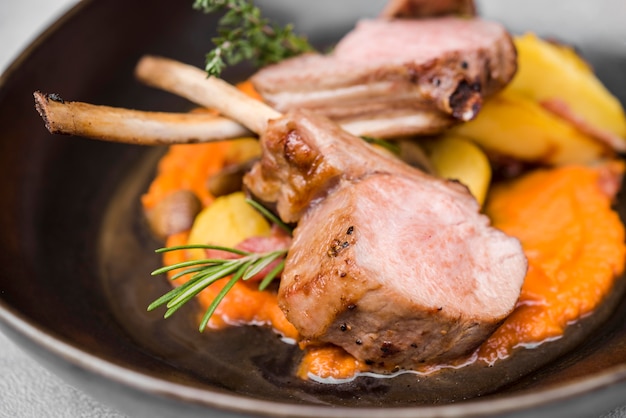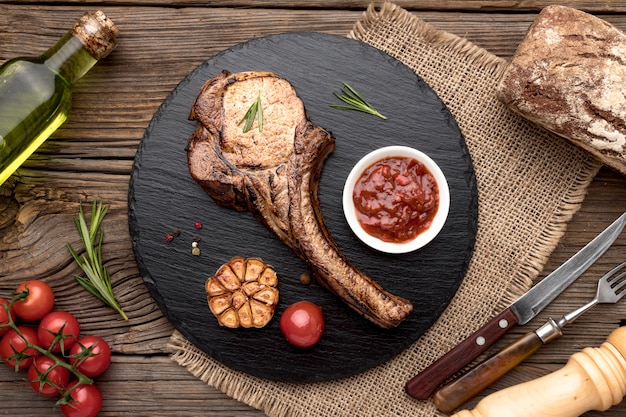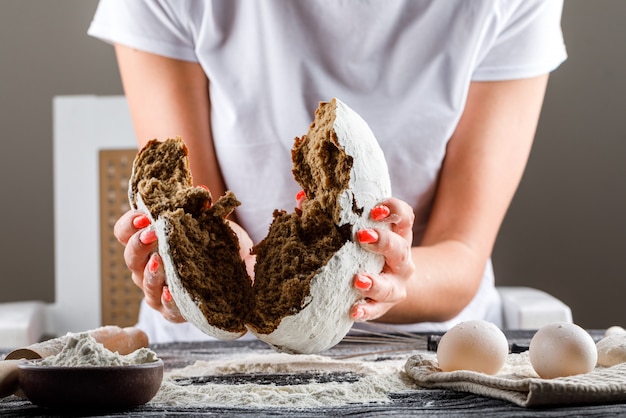Ah, deer backstrap. It’s the prize of any successful hunt, isn’t it? The tender, lean meat, bursting with flavor, is a real treat. But getting it just right can be tricky. Overcook it, and it turns dry and tough. Undercook it, and well, let’s just say you don’t want to know.
This guide is all about conquering that challenge. From the moment you field dress your deer to serving that perfect, succulent backstrap, I’ll share my tricks and secrets for getting the most out of this fantastic ingredient. We’ll dive into the different ways to prepare and cook it, along with some of my favorite recipes, all seasoned with personal anecdotes and, of course, my own unique perspective.
(Part 1) A Hunter’s Perspective: Sourcing the Backstrap

First things first: understanding the backstrap. For those unfamiliar, it's the long muscle that runs along the deer’s back, from neck to tail. It's prized for its tenderness, and it’s a real gift from the hunt.
Now, I know there are strong feelings about hunting, so let me be clear: I respect everyone’s choices. But for me, it’s about more than just getting meat. It’s about the thrill of the chase, the connection with nature, and the responsibility of providing my own food.
And, of course, there’s the camaraderie of shared experiences with fellow hunters, those stories around the campfire that are etched in memory.
But enough about the philosophy. Let's get back to the backstrap!
Field Dressing: The First Step
For me, a clean kill is essential. It's humane, and it ensures the highest quality meat. So, whether you’re a seasoned hunter or just starting out, prioritize a quick and ethical hunt.
Once you’ve got your deer, it’s time to field dress it – removing the internal organs and preparing the carcass for transport.
Important Tips for Field Dressing
Here's what to keep in mind:
- Cleanliness is paramount! Make sure your hands and tools are clean to avoid contaminating the meat.
- Use a sharp knife! This makes the job easier and safer. A dull knife can be a recipe for disaster.
- Take your time! There’s no need to rush. Take your time and make sure you're removing the organs properly.
Removing the Backstraps
Once field dressed, you can remove the backstraps. They are on either side of the spine, running the length of the carcass. I usually use a sharp boning knife to separate them.
Backstrap Trimming: Getting Ready for Cooking
Before you start cooking, trim the backstraps. This means removing any excess fat, silver skin (that tough membrane), and tendons. You can usually remove the silver skin by scraping it off with the back of your knife.
Freezing for Later: Maintaining Quality
If you’re not cooking your backstraps right away, freeze them properly. Vacuum sealing is the best way to remove air and prevent freezer burn, which can affect the texture and flavor. When you’re ready to cook, thaw them in the refrigerator overnight.
(Part 2) The Art of Preparing Deer Backstrap: Bringing Out the Best Flavours

Now we get to the fun part: preparation! The goal is to bring out the natural flavor and tenderness of the backstrap.
Marination: The Key to Enhanced Flavor
I’m a firm believer in marinating deer backstrap. It adds a ton of flavor and helps tenderize the meat. But there are a few things to keep in mind:
- Acidity is your friend! Acids like vinegar, lemon juice, or wine break down tough proteins and enhance flavor. Just be careful not to marinate for too long, or the meat will get mushy.
- Get creative with your marinade! There are endless possibilities. I like to play around with different herbs, spices, and flavor profiles. Some of my favorites include a simple garlic and herb marinade, a tangy balsamic marinade, or a spicy chipotle marinade.
Marinade Recipes: A Flavorful Journey
Here are a few marinade combinations I love to use:
| Marinade | Ingredients |
|---|---|
| Garlic and Herb | Garlic cloves, fresh herbs (thyme, rosemary, oregano), olive oil, lemon juice, salt, and pepper |
| Balsamic | Balsamic vinegar, olive oil, Dijon mustard, honey, fresh herbs (rosemary, thyme), salt, and pepper |
| Chipotle | Chipotle peppers in adobo sauce, garlic, cumin, oregano, paprika, olive oil, lime juice, salt, and pepper |
Dry Brining: A Technique for Extra Flavor
Dry brining is another great way to boost flavor. You rub the meat with salt and spices and leave it in the refrigerator for several hours or even overnight. The salt draws out moisture, which then redistributes itself, making the backstrap more tender and flavorful.
The Importance of Resting: Allowing the Flavors to Mingle
After marinating or dry brining, give the backstrap a chance to rest. This allows the flavors to penetrate the meat and develop.
(Part 3) cooking techniques: From Sear to Slow Cook

With your backstrap prepped and ready, it’s time to explore cooking methods. There are many ways to cook deer backstrap, each with its own unique flavor and texture.
Pan-Searing: The Classic Approach
Pan-searing is a classic way to cook deer backstrap. It involves searing the meat over high heat in a hot pan, creating a delicious crust while keeping the inside juicy and tender.
Here’s how to get that perfect sear:
- Get the pan scorching hot! Use a cast iron or stainless steel pan, and heat it over high heat until it’s smoking hot.
- Pat the backstrap dry! This helps to prevent steaming instead of searing.
- Season generously! Don’t be shy with the salt and pepper, and feel free to add other spices or seasonings you like.
- Sear for a few minutes per side! You want the backstrap nicely browned on all sides. This creates a delicious crust and locks in the juices.
- Reduce the heat and finish cooking! After searing, reduce the heat to medium-low and cook the backstrap until it reaches an internal temperature of 145 degrees Fahrenheit (63 degrees Celsius) for medium-rare. Deer meat cooks quickly, so keep a close eye on it!
Grilling: The Outdoor Option
Grilling is another great option, adding a smoky flavor and those desirable grill marks.
Here are a few tips for grilling deer backstrap:
- Preheat your grill! You want to cook your backstrap over medium-high heat.
- Use a grill pan! If you’re worried about the backstrap falling through the grill grates, use a grill pan.
- Keep the grill lid closed! This helps to cook the backstrap evenly.
- Flip it once! You only need to flip the backstrap once during grilling.
- Let it rest! Once the backstrap is cooked, remove it from the grill and let it rest for a few minutes before slicing and serving.
slow cooking: For Maximum Tenderness
If you’re looking for the most tender deer backstrap possible, slow cooking is the way to go. It allows the meat to break down in the slow heat, resulting in a incredibly tender and juicy final product.
Roast in the Oven: A Tried and True Method
Roasting is another excellent option. It’s simple and hands-off, yielding a juicy and flavorful result.
(Part 4) Delicious Recipes: A Journey Through Flavor
Now, let’s get to the good stuff – the recipes! Here are a few of my favorite ways to cook deer backstrap:
Classic Pan-Seared Deer Backstrap
This recipe is a classic for a reason. It’s simple, delicious, and easy to adapt to your own taste preferences.
Ingredients:
- 1-2 deer backstraps, trimmed
- Olive oil
- Salt and pepper to taste
- Fresh herbs (thyme, rosemary, oregano)
- Garlic cloves
Instructions:
- Pat the backstraps dry with paper towels.
- Season liberally with salt, pepper, and fresh herbs.
- Heat a cast iron or stainless steel pan over high heat. Add olive oil.
- Once the pan is smoking hot, sear the backstraps for 2-3 minutes per side.
- Reduce heat to medium-low and continue cooking for 5-7 minutes, or until the internal temperature reaches 145 degrees Fahrenheit (63 degrees Celsius) for medium-rare.
- Remove from the pan and let rest for 5-10 minutes before slicing and serving.
Honey-Glazed Deer Backstrap
This recipe adds a touch of sweetness and tanginess to the backstrap, making it a truly unforgettable dish.
Ingredients:
- 1-2 deer backstraps, trimmed
- Olive oil
- Salt and pepper to taste
- 1/4 cup honey
- 1/4 cup balsamic vinegar
- 1 tablespoon Dijon mustard
- Fresh rosemary sprigs
Instructions:
- Pat the backstraps dry with paper towels.
- Season liberally with salt and pepper.
- Heat a cast iron or stainless steel pan over medium heat. Add olive oil.
- Sear the backstraps for 2-3 minutes per side.
- In a small saucepan, combine the honey, balsamic vinegar, Dijon mustard, and rosemary sprigs. Bring to a simmer over medium heat, stirring occasionally.
- Reduce heat to low and continue simmering for 5-7 minutes, or until the sauce has thickened slightly.
- Remove the backstraps from the pan and pour the sauce over them.
- Return the backstraps to the pan and cook for an additional 2-3 minutes, basting with the sauce.
- Remove from the pan and let rest for 5-10 minutes before slicing and serving.
slow cooker Deer Backstrap with wild mushrooms
This recipe is perfect for a chilly evening. The backstrap is cooked low and slow in the slow cooker, resulting in a melt-in-your-mouth texture.
Ingredients:
- 1 deer backstrap, trimmed
- 1/2 cup red wine
- 1/4 cup beef broth
- 1 tablespoon Dijon mustard
- 1 teaspoon dried thyme
- 1/2 teaspoon salt
- 1/4 teaspoon black pepper
- 1/2 pound wild mushrooms, sliced
- 1 tablespoon olive oil
- Fresh parsley, chopped
Instructions:
- In the slow cooker, combine the red wine, beef broth, Dijon mustard, thyme, salt, and pepper.
- Add the deer backstrap to the slow cooker and cook on low for 6-8 hours, or until the meat is fork-tender.
- While the backstrap is cooking, heat the olive oil in a large skillet over medium heat.
- Add the mushrooms and cook until they are golden brown and tender.
- Remove the backstrap from the slow cooker and shred it with two forks.
- Add the shredded backstrap and mushrooms to the slow cooker and stir to combine.
- Serve hot, garnished with fresh parsley.
(Part 5) side dishes: Complementing the Flavourful Backstrap
No meal is complete without some delicious side dishes to balance the flavor and texture of the backstrap.
Creamy mashed potatoes
- creamy mashed potatoes are a classic comfort food that pairs perfectly with the lean, flavorful deer backstrap.
- The rich, creamy texture provides a lovely contrast.
Roasted Root Vegetables
- Roasted root vegetables add a touch of sweetness and earthy flavor.
- Carrots, parsnips, potatoes, and beets all roast beautifully and complement the backstrap.
Wild rice pilaf
- wild rice adds a nutty flavor and a bit of textural interest.
- It can be cooked simply with butter and broth, or you can add other ingredients like mushrooms, onions, and herbs.
green beans Almondine
- Green beans almondine provide a light and refreshing counterpoint to the richness of the deer backstrap.
- The almonds add a bit of crunch and a nutty flavor.
grilled asparagus
- Grilled asparagus is a simple and elegant side dish that complements the flavor of deer backstrap.
- The char from the grill adds a smoky flavor, and the asparagus itself is light and refreshing.
(Part 6) Serving and Presentation: Making Your Meal Memorable
You’ve cooked your deer backstrap to perfection, and you’ve got delicious side dishes ready to go. Now, it’s time to think about serving and presentation.
Plate Up with Elegance: Creating a Visual Feast
When it comes to plating your deer backstrap, I like to keep it simple and elegant. I prefer using a white plate to let the colours of the meat and the side dishes shine through.
Here’s how I like to plate my deer backstrap:
- Slice the backstrap thinly! This allows for a more elegant presentation and makes it easier for guests to cut and eat.
- Arrange the backstrap slices in a fan! This creates a visually appealing presentation and highlights the beautiful colour and texture of the meat.
- Place the side dishes alongside the backstrap! Choose a few complementary side dishes and arrange them on the plate in a visually pleasing manner.
- Add a finishing touch! A sprig of fresh rosemary or a few berries can add a touch of colour and elegance to the plate.
Don't Forget the Sauce: Adding Depth and Flavour
A good sauce can really elevate your deer backstrap. Here are a few ideas:
- Red wine sauce: This classic sauce pairs beautifully with the richness of the deer backstrap.
- Mushroom sauce: The earthy flavor of mushrooms complements the taste of venison perfectly.
- Cranberry sauce: This sweet and tangy sauce adds a festive touch to your meal.
(Part 7) Leftovers: Turning Culinary Gold into New Delights
Let’s be honest, sometimes you end up with leftover deer backstrap. But don’t despair! It’s a great opportunity to get creative and create new dishes.
Deer Backstrap Stir-Fry: A Quick and Delicious Meal
Stir-fries are a great way to use up leftover deer backstrap. Slice the leftover backstrap into thin strips and add it to your favorite stir-fry recipe.
Deer Backstrap Tacos: A Flavorful Twist on a Classic
Deer backstrap makes an excellent taco filling. Simply shred the leftover backstrap and add it to your taco recipe.
Deer Backstrap Soup: A Hearty and Warming Meal
Deer backstrap can also be used to make a delicious and hearty soup. You can add the leftover backstrap to a variety of soup recipes.
(Part 8) FAQs: Answering Your Deer Backstrap Questions
You’ve got questions, I’ve got answers! Here are some of the most frequently asked questions about cooking deer backstrap:
1. How long can you marinate deer backstrap?
You can marinate deer backstrap for anywhere from 30 minutes to 24 hours. For a shorter marinade, 30 minutes to an hour is sufficient. For a more intense flavor, you can marinate for up to 24 hours. However, be sure to check the meat periodically and make sure it’s not getting too mushy.
2. What is the best temperature to cook deer backstrap?
The ideal internal temperature for cooked deer backstrap is 145 degrees Fahrenheit (63 degrees Celsius) for medium-rare. However, personal preference comes into play here, so adjust the cooking time accordingly.
3. Can you overcook deer backstrap?
Yes, you can definitely overcook deer backstrap. It’s a lean meat, so it cooks quickly. Overcooked backstrap will be dry, tough, and flavourless. It’s best to err on the side of undercooking rather than overcooking.
4. How do you know if deer backstrap is done?
The best way to tell if deer backstrap is done is to use a meat thermometer. Insert the thermometer into the thickest part of the meat and check the temperature. Once it reaches 145 degrees Fahrenheit (63 degrees Celsius) for medium-rare, it’s done.
5. What are some good side dishes for deer backstrap?
Some good side dishes for deer backstrap include mashed potatoes, roasted vegetables, wild rice pilaf, green beans almondine, and grilled asparagus.
(Part 9) Final Thoughts: A culinary adventure Awaits
So there you have it – my ultimate guide to cooking deer backstrap. From sourcing the meat to preparing it to cooking it and serving it, I’ve covered everything you need to know to create delicious meals from this fantastic ingredient.
I hope this guide has inspired you to get into the kitchen and experiment with different recipes. Remember, cooking is about creativity and having fun. So don’t be afraid to try new things and come up with your own signature dishes. And who knows, you might just surprise yourself with what you can create!
Everyone is watching

Prime Rib Roast Cooking Time Chart: Per Pound Guide
Cooking TipsPrime rib roast. Just the name conjures images of lavish dinners, crackling fires, and hearty laughter. It’s ...

How Long to Bake Potatoes in the Oven (Perfect Every Time)
Cooking TipsBaked potatoes are a staple in my kitchen. They're incredibly versatile, delicious, and surprisingly easy to m...

Perfect Rice Every Time: The Ultimate Guide to Cooking Rice
Cooking TipsAs a self-proclaimed foodie, I've always been a bit obsessed with rice. It's the foundation of countless cuisi...

The Ultimate Guide to Cooking Asparagus: Tips, Techniques, and Recipes
Cooking TipsAsparagus. The mere mention of this spring delicacy conjures up images of vibrant green spears, crisp and burs...

Ultimate Guide to Cooking the Perfect Thanksgiving Turkey
Cooking TipsThanksgiving. Just the word conjures up images of overflowing tables laden with delicious food, the scent of r...
